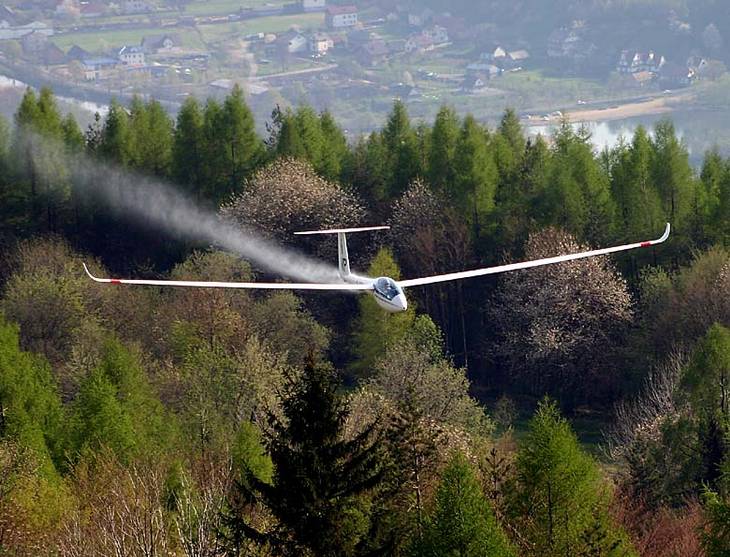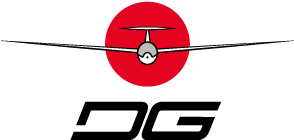written by THOMAS BERGMANN
published in the Magazine “Segelfliegen” in 2005
With 179 registered sailplanes to-date the LS8, built by Rolladen Schneider in Egelsbach since 1994, occupies 13th place in the registration statistics of the LBA. Also after the acquisition by DG-Flugzeugbau the glider in four variants with 15 and 18 meters of span, with or without engine remains one of the most popular gliders in Germany.

Walter Schneider and Wolf Lemke commenced glider production in 1968 with the extremely successful LS1 foray into the standard class; with the LS3 in 1977 the entrance into the racing class followed. From these in 1980 evolved in co-operation of Lemke and Hans Jörg Streifeneder the LS4 as successor of the LS1.
1984 the racing class glider LS6, which replaced the LS3, was introduced. By adding Winglets and removing flaps 10 Years later the LS8 developed and first places at the European Championships 1994 and the World Championships 1995 soon proved the successful concept of the LS8.
From the beginning the fuselage was designed for the installation of an engine and even the installation of a total rescue system was initially considered. As LS8-b the airplane can be ordered also with engine preparation only, this facilitates retro-fitting of a sustainer engine considerably.
Typical for LS the wheel brake is heel operated via the rudder pedals; the manual however terms it emergency brake only due to rapid brake pad wear. The beefed up 575 kg version has a 5 wheel replacing the 4 one, thus improving ground handling on grass runways substantially. Retracting the undercarriage also brings the belly release up into the fuselage.
The instrument panel tilts up with the canopy and an emergency exit assistance is optionally available.The design of the LS8-s with variable wing span caters for pilots, who prefer to fly standard class competitions and, in addition want the performance of 18 meters. Its also easier to accommodate the glider in a tight hangar having only 14.20 meters span without Winglet. Nevertheless the LS8-a is also available as a skinned down version with 15 m only.
The glider has the characteristically double tapered wing with Wortmann profile and kink in leading and trailing edge. Adding the 18-Meter-tips with the noticeably smaller Winglets the pilot experiences yet another substantial improvement of flight performances. Thus the lift/drag ratio rises to 48 and minimum sink improves to 0,51 m/s. in addition, 190 liters of water can maximally be carried in the 4 wing tanks, such requires center of gravity correction with water in the fin tank. All control connections are made automatically; double flange airbrakes are installed in the upper carbon fiber sandwich surfaceThe engine installation of the LS8-st with a Solo 2350 weighs complete with Fuel approx. 50 kg, made up for by the all up weight increase to 575 kg.
The original pneumatic retraction mechanism proved expensive and unreliable; DG replaced it with the proven linear bearing actuator for their production version. Operation of the 15 KW engine kept deliberately simple with the DG proprietary control unit. Travel distance with sustainer is approx. 300 km.
After the acquisition of Rolladen Schneider by DG-Flugzeugbau in July 2003 production of the LS8 continued very successfully despite initial legal problems. The finish of the airplanes manufactured at DG is reportedly noticeably better.
Although a good number of LS8 are registered, there are only few used ones on the market and its probably impossible to get a good one real cheap.
Text: Thomas Bergmann
Translation Rolf Buelter

List of Spare Parts
Some more Photos of the LS8
Type Support:
DG Flugzeugbau GmbH
Otto-Lilienthal-Weg 2 / Am Flugplatz
D-76646 Bruchsal
Telefon: +49 (0) 72513020-0
e-mail: info@dg-flugzeugbau.de
internet: www.dg-aviation.de
Former Manufacturer:
Rolladen-Schneider Flugzeugbau, Egelsbach
